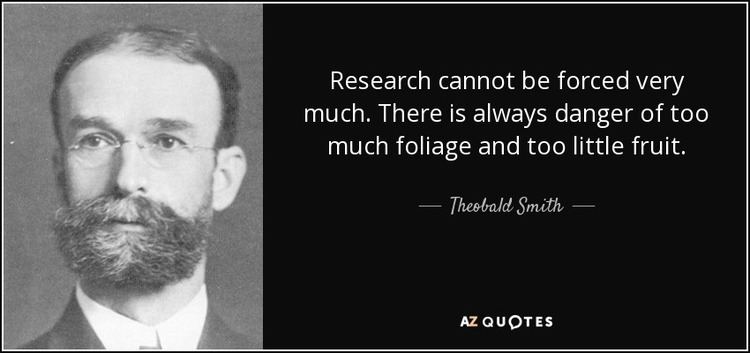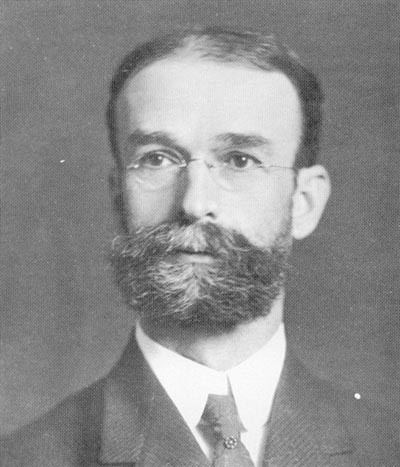Nationality American Books Parasitism and Disease | Name Theobald Smith Role Medical Doctor | |
 | ||
Born July 31, 1859Albany, New York ( 1859-07-31 ) Died December 10, 1934, New York City, New York, United States Similar People Emil von Behring, David Bruce, Elie Metchnikoff, Robert Koch | ||
Theobald smith dw p3
Theobald Smith ForMemRS (July 31, 1859 – December 10, 1934) was a pioneering epidemiologist and pathologist and is widely considered to be America's first internationally significant medical research scientist.
Contents

Theobald smith gp1
Education
Smith was born in Albany, New York, and received a Bachelor of Philosophy degree from Cornell University in 1881, followed by an MD from Albany Medical College in 1883. After his graduation from medical school, Smith held a variety of temporary positions which might broadly be considered under the modern heading of "medical laboratory technician". After some prodding by his former professors, Smith secured a new research lab assistant position with the Veterinary Division of the US Department of Agriculture (USDA) in Washington, D.C., beginning his position there in December 1883.
Research
Smith became the Inspector of the newly created Bureau of Animal Industry (BAI) in 1884. Established by Congress to combat a wide range of animal diseases—from infectious disease of swine to bovine pneumonia, Texas cattle fever to glanders—Smith worked under Daniel E. Salmon, a veterinarian and Chief of the BAI. Smith also discovered the bacterial species which would eventually form the genus Salmonella. After two years of work studying the efficacy of bacterial vaccination in pigs, Smith erroneously believed he had found the causative agent of hog cholera.
Smith turned his attention to Texas fever, a debilitating cattle disease; this work is detailed in a chapter in Microbe Hunters, by Paul De Kruif. In 1889, he along with the veterinarian F.L. Kilbourne discovered Babesia bigemina, the tick-borne protozoan parasite responsible for Texas fever. This marked the first time that an arthropod had been definitively linked with the transmission of an infectious disease and presaged the eventual discovery of insects as important vectors in a number of diseases (see yellow fever, malaria).
Smith also taught at Columbian University in Washington, D.C. (now George Washington University) from 1886–1895, establishing the school's Department of Bacteriology. In 1887, Smith began research on water sanitation in his spare time, investigating the level of fecal coliform contamination in the Potomac River. Over the next five years, Smith expanded his studies to include the Hudson River and its tributaries.
While Smith's work at the BAI had been highly productive, he chafed against the federal government bureaucracy and the lack of leadership from his supervisor. In 1895 Smith moved to Cambridge, Massachusetts to accept a dual appointment: serve as professor of comparative pathology at Harvard University, and direct the pathology lab at the Massachusetts State Board of Health.
Smith joined the Rockefeller Institute for Medical Research as Director of the Department of Animal Pathology in 1915 and remained there until his retirement in 1929.
In 1933, Smith was awarded the Royal Society's prestigious Copley Medal "For his original research and observation on diseases of animals and man.".
